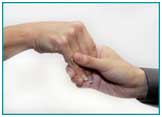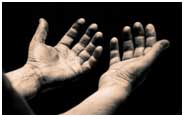
Body language, or non-verbal communication, isn’t a topic that’s talked about often (pun intended!). Yet, research shows that it is a significant, if not the most important part of communication. The ability to read body language and awareness of our own body language are also pinnacles of emotional intelligence and social skills.
There is one area where articles about body language are abundant – flirting, dating, and other forms of mate-hunting. Love gurus offer tantalizing tips on how to let your body do the talking when you want to attract a mate, whether it’s telling women to swing their hips when they walk, or telling men to puff out their chest. Sales training might also emphasize the importance of reading a potential customer’s body cues. For example, the amount of eye contact they make with the product or the way they smile could indicate their level of interest.
However, chances are the Average Joe or Jane never really pays conscious attention to body language – their own or others’. And that is too bad, because whether we realize it or not, we are reacting to non-verbal signals more than to the actual words the person spoke. Ever heard the phrase, “It’s not what you said; it’s how you said it!”?
The point is, body language is an important tool in the interpersonal skills toolbox, and can often speak a lot louder than words, if you know how to read the signals. There is one caveat: Body language comes in clusters, like spoken sentences. Rather than judging one gesture or one expression, you need to take body language as a whole. The whole body can tell a story.
In this post of the Body Talk series, we will be discussing what research has to say about different types of “hand” body language.
Imagine you’re negotiating the biggest deal of your life and everything seems to be going well. You confidently assume that it’s time to close the deal, and reach over to shake the other person’s hand…and he doesn’t shake it. Here are some of the thoughts that might go through your mind:
… I totally misread him and he doesn’t want the deal?
… He has a cold?
… He’s afraid of germs?
… He comes from a culture where shaking hands isn’t something that’s done, or where it means something different?
… My hands are sticky or dirty from lunch? (sneaks a quick look at hand)
But will any old handshake do? Not so, according to body language experts. According to research, you can tell a lot about a person’s personality by the way they shake hands.
Types of handshakes and what they mean
- The Sociable Shake: Extroverted people tend to have a firm handshake. Shy or neurotic people tend to have a loose handshake, almost like they are reluctant to shake your hand.
- The Dominator Shake: A handshake can be used to establish dominance, mark territory or demonstrate authority. Here are some examples:

- The Finger-Crushing Shake: An overly-firm, finger-crushing handshake might be a person’s way to establish dominance, but it can actually be a way to hide/compensate for a sense of weakness or ineptitude.
- The Two-Hander Shake: This involves shaking with the right hand and placing the left hand on someone’s arm or shoulder, or cupping their hand between both of yours. Adding the left hand demonstrates a desire to show honesty and sincerity, and the higher up the hand is placed, the greater the level of intimacy between the two people (or the greater the desire to create a close relationship). Here’s the quirky thing about this shake: Given its degree of closeness and touchy-feely-ness, you’d think it would be used more often among close friends and family. The truth is, political leaders often use this handshake to make it seem like they are on good terms, which can actually give it an air of insincerity. Political leaders want to display camaraderie…but let’s be honest here: It may not be a heartfelt sentiment. It should also be noted that when someone does a two-hand shake that involves cupping the other person’s hand (see Bush and Putin below), it displays a desire to take control of the interaction. You’re literally trapping the person’s hand in yours!

- The Sweaty Shake: This one’s pretty straightforward. When a person is nervous, they’re more likely to sweat, resulting in a clammy, wet handshake. There are exceptions to the rule, however. Some people are just sweat-prone.
- The Finger Shake: This handshake involves, as the name implies, just the fingers. While it may seem sweet and dainty, it could actually be a sign that a person wants to keep you at a distance. They’re not comfortable around you yet, and don’t want the intimacy of a full, hand-on-hand shake.

- The No Cup Shake: According to one website, when a person shakes your hand but doesn’t allow their palm to touch yours, it could be for one of two reasons: Either the person is very shy, or he/she is hiding something from you.
Here are some other hand gestures that can say a lot about what a person is feeling, according to body language researchers Pease & Pease (2004):
- Showing open palms (facing up) reflects your openness;showing palms down shows authority.

- Pointing at someone, especially with your palm closed, can be considered rude and aggressive.

- Steepling your fingers in front of your face reflects confidence and self-assurance.

- Standing with your hands behind your back (but with hands clasped together), is a sign of superiority, confidence, and power.

- Clenched hands, even when smiling, can indicate frustration.

So what do crossed arms say? The Peases’ research indicates that different arm gestures can reflect different emotions. For example:
- If arms are crossed and fists are clenched, a person is more likely to be feeling hostile.
- If arms are crossed with each hand gripping the opposite arm, a person is either feeling insecure or unsure (a bad sign if you’re trying to sell them something – they’ll need some reassurance).
- If someone’s arms are crossed but their thumbs are up, they’re feeling defensive, but still cool and confident.
The Peases also indicate that when a woman has one arm down with the other crossed (and the hand gripping an arm), it’s a protective gesture – just like when men cup both hands in front to protect their “family jewels.”

Check in for the next installment on body language where I’ll be discussing smiling.
Want to learn more about using psychological tests for hiring, leadership development, career development or talent retention? Download our free eBook loaded with down-to-earth information about psychological testing for HR purposes.
Ready for a test drive? Just ask us for a free trial of our ARCH Profile testing center for professionals.
References
1) Dolcos, S., Sung, K., Argo, J. J., Flor-Henry, S., & Dolcos, F. (2012) The Power of a Handshake: Neural Correlates of Evaluative Judgments in Observed Social Interactions. Journal of Cognitive Neuroscience, 24 (12), 2292-2305.
2) Kuhnke, E. (2012). Body Language For Dummies. West Sussex, England: John Wiley & Sons Inc.. Retrieved April 30, 2014 from https://www.inkling.com/read/dummies-body-language-elizabeth-kuhnke-2nd/chapter-9/analysing-handshakes
3) Pease, A., & Pease, B. (2004). The Definitive Book of Body Language. Australia: Pease International. Retrieved January 27, 2014 from http://e-edu.nbu.bg/pluginfile.php/331752/mod_resource/content/0/Allan_and_Barbara_Pease_-_Body_Language_The_Definitive_Book.pdf
4) The Guardian. (n.d.). The top 10 handshakes. In Guardian Jobs. Retrieved April 30, 2014, from http://jobs.theguardian.com/article/3384924/the-top-10-handshakes/.
5) Willis, M. L., & Palermo, R. (2011). Judging Approachability on the Face of It: The Influence of Face and Body Expressions on the Perception of Approachability. Emotion, 11(3), 514-523.


